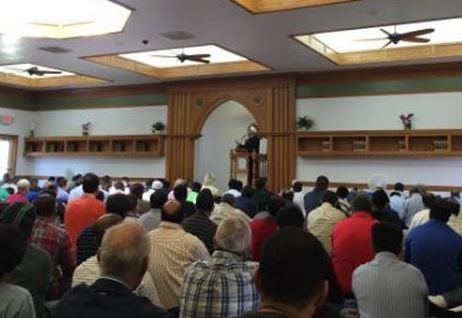(OKLAHOMA CITY, OK, 6/3/19) — On Tuesday, June 4, the Muslim community in Oklahoma will celebrate the end of the month-long fast of Ramadan with communal prayers around the state.
[NOTE: Ramadan is the month on the Islamic lunar calendar during which Muslims abstain from food, drink and other sensual pleasures from break of dawn to sunset.]
SEE: Rooted In Love, Muslim Oklahomans continue celebrating Ramadan and repelling hate with love amidst growing Islamophobia across the world.
https://www.okgazette.com/oklahoma/rooted-in-love/Content?oid=6176990
The prayers mark the beginning of the Eid ul-Fitr (EED-al-FITTER), or “feast of fast breaking” holiday, in which Muslims exchange social visits and seek to strengthen family and community bonds. During this holiday, Muslims greet each other by saying “Eid mubarak” (EED-moo-BAR-ak), meaning “blessed Eid,” and “taqabbalallah ta’atakum,” or “may God accept your deeds.” Many communities also hold multicultural bazaars and other family activities following the prayers.
Eid ul-Fitr is the first of the two major Muslim holidays. The second holiday, Eid ul-Adha (EED-al-ODD-ha), comes near the end of the Hajj, or pilgrimage to Mecca.
WHEN: Tuesday, June 4, (Consult local mosques for exact times of prayer services.) Prayers are held early in the morning. Ask local prayer coordinators for exact dates, times and locations.
WHERE: The Eid prayers are held either in local mosques or in public facilities designed to accommodate large gatherings.
CONTACT: Call local Muslim organizations for details about Eid celebrations. If there are no known contacts in a particular community, contact CAIR Oklahoma, go to: https://www.cairoklahoma.com/contact/
PHOTO OPPORTUNITY: Each year, Muslims come to the prayers in colorful attire representative of different areas of the Islamic world. The prayers themselves are quite visual, with worshipers arranged in neat rows and bowing in prayer in unison. Participants exchange embraces at the conclusion of the prayers.
NOTE: Because this is a religious service, reporters and photographers of both sexes should dress modestly. Some communities may ask female reporters and photographers to put a scarf over their hair while in the actual prayer area. Photographers should arrive early to get into position for the best shots. Photographers are also advised not to step directly in front of worshipers and to seek permission for close-up shots. Shots of shoes removed for prayer, and rear-angle shots of prostrating worshipers are considered inappropriate.
CAIR is America’s largest Muslim civil liberties and advocacy organization. Its mission is to enhance understanding of Islam, protect civil rights, promote justice, and empower American Muslims.
La misión de CAIR es proteger las libertades civiles, mejorar la comprensión del Islam, promover la justicia, y empoderar a los musulmanes en los Estados Unidos.

